-
Car Reviews
- Car News
-
Car Comparisons
Latest comparisons
- Chasing Deals
Has Alfa Romeo nailed the brief for their first ever plug-in hybrid?
You can generally play bingo when reading any Alfa Romeo review.
How long until the reviewer mentions the word ‘passion’? What about ‘romance’, ‘beauty’, ‘desirability’, or ‘emotion’? Or, on the other end of the scale, ‘reliability’?
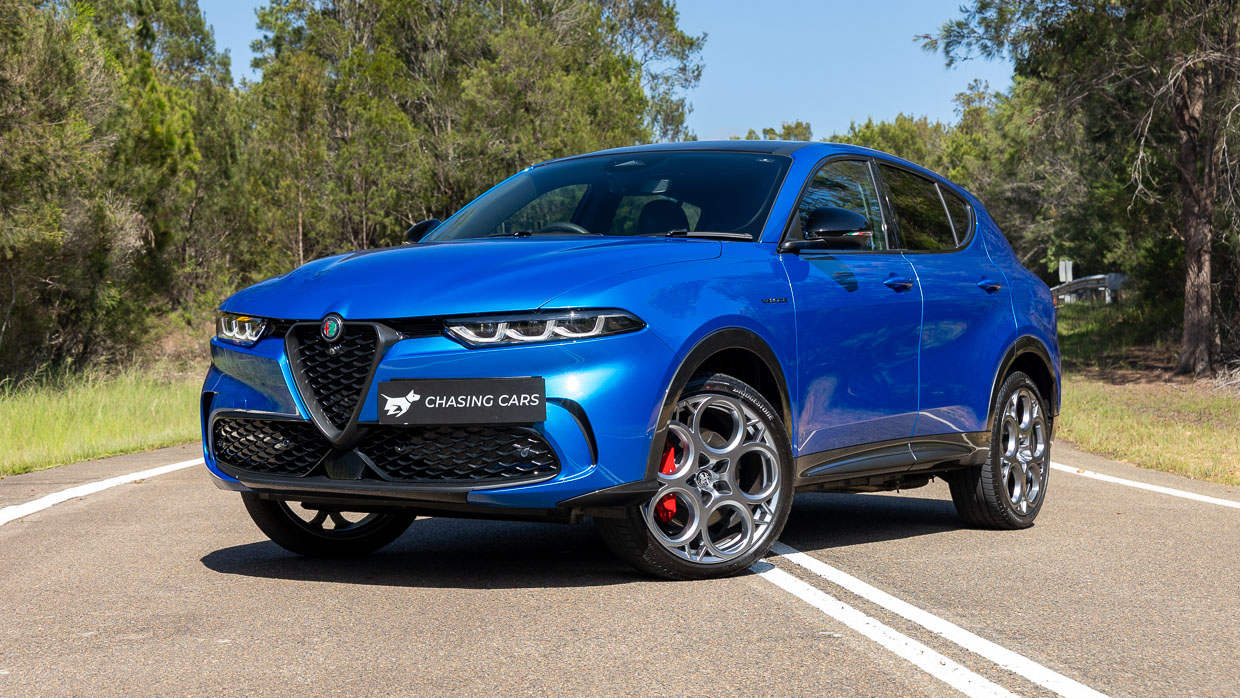
It’s a blessing and a curse – Alfas have become so synonymous with what they have historically manufactured that it’s incredibly difficult for the brand to break free of both expectation and reputation.
So how does Alfa Romeo, a brand that’s spent more than a century building providence as a maker of what are more often than not regarded as highly-desirable and beautifully designed – if sometimes flawed – internal combustion coupes and sedans, navigate the transition to an SUV dominated and electrified era?
And how does it do that whilst maintaining what has traditionally made an Alfa Romeo an ‘Alfa Romeo’?
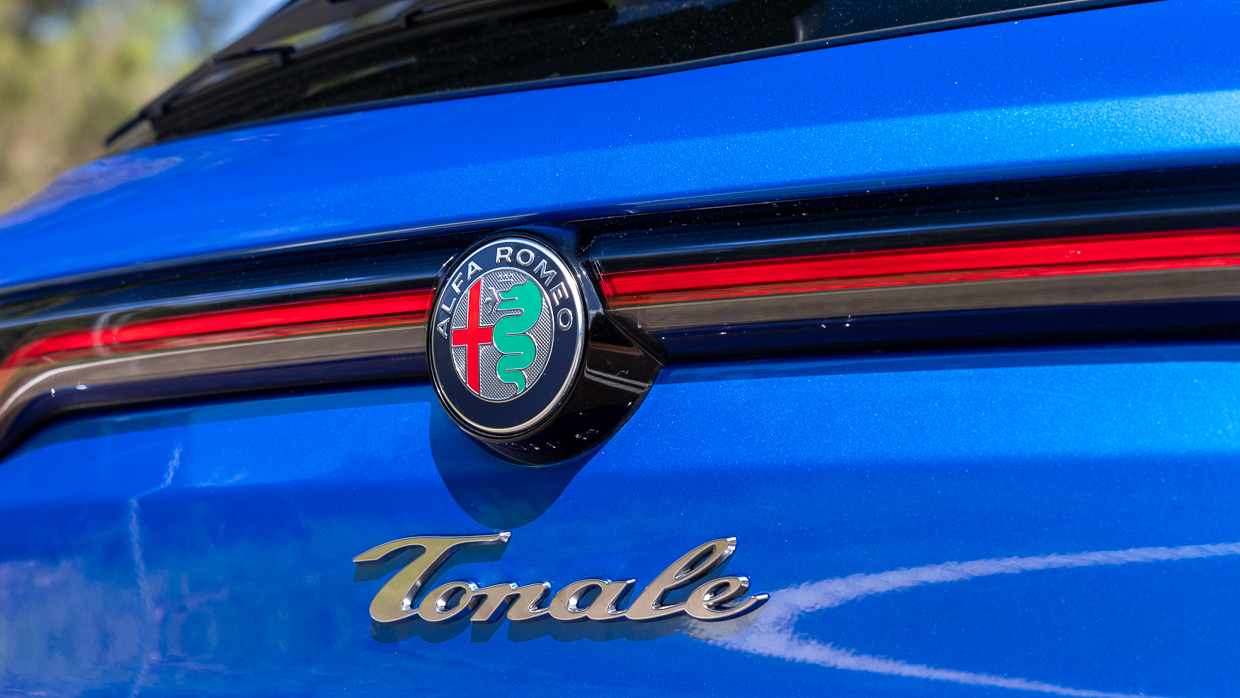
Enter the Tonale Veloce Plug-In Hybrid Q4.
As its first-ever C-segment small SUV, the Tonale was already a supremely important vehicle for the Italian automaker, but now the plug-in hybrid electric version – the brand’s first ever vehicle of the type – is here.
Together with the soon to be revealed Milano city SUV, the Tonale is a model designed to maintain relevance for Alfa Romeo – and commercial relevance at that – before the famed Italian marque is left in the dust by a fast accelerating SUV and EV revolution.
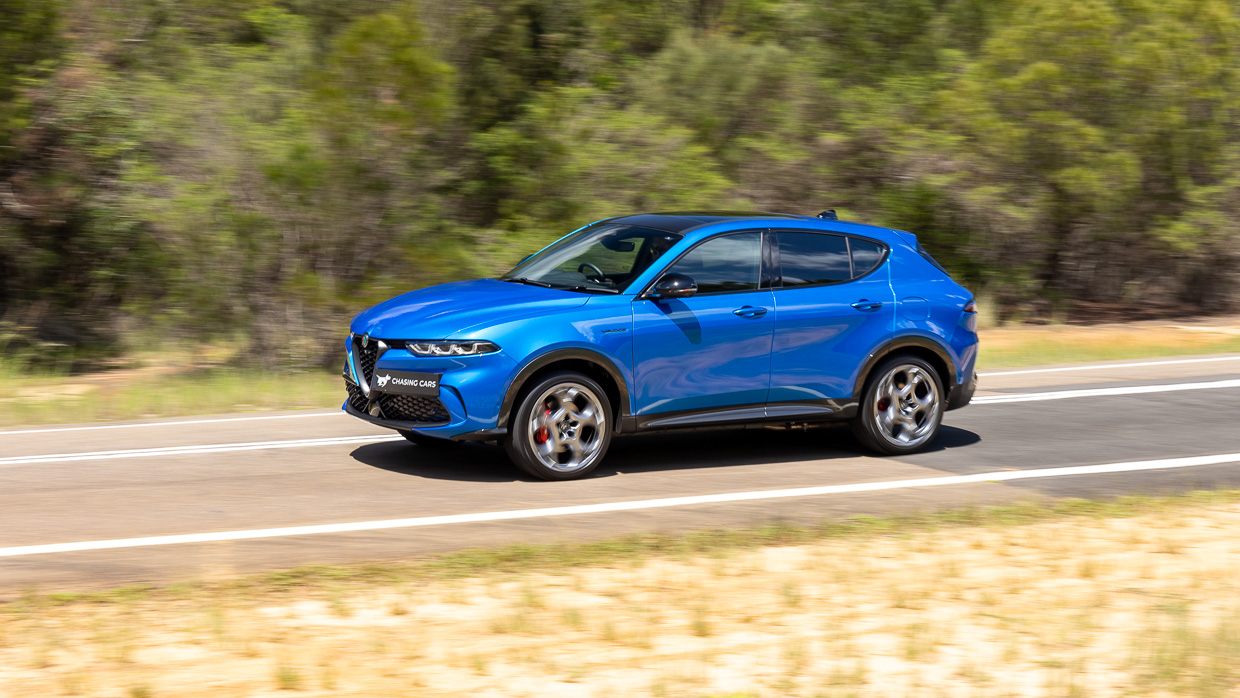
Already, it seems to be doing what’s intended. In 2022, Alfa Romeo recorded its lowest Australian delivery figures this century, but in 2023 deliveries were up 25 percent, driven entirely by the new Tonale.
Now the all-important PHEV will bolster the range further.
This plug-in SUV straddles two worlds: Alfa’s internal combustion past and soon to be solely electric future. It’s a tangible symbol of the evolving transition, giving us an insight into what’s to come for the brand.
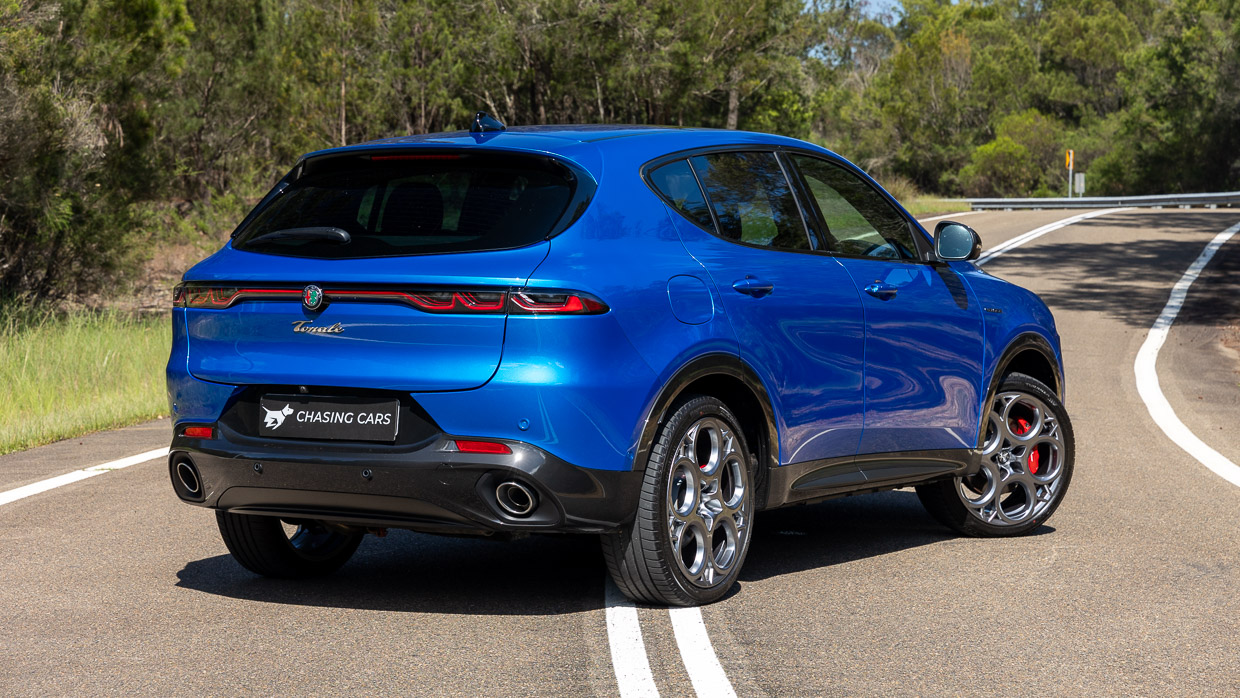
So, how does it measure up? Does it expand the appeal of the niche Italian marque whilst retaining an appropriate amount of Alfa Romeo sparkle? And, most importantly, Alfa Romeo or not, how does it perform as a plug-in hybrid electric SUV?
We took it on our first drive on Aussie roads to get a taste and test out its all important electric range claims too.
The ageing architecture that underpins Alfa Romeo’s first ever PHEV is a modified version of the platform found on other Stellantis vehicles such as the Fiat 500X and Jeep Compass.
Die-hard ‘Alfisti’ could be sceptical – not only is it electric and an SUV, but it shares a platform with an American car, and is front-wheel-drive first.
It’s quite unlike the dynamically well-regarded, rear-wheel-drive-platformed Giulia sedan and Stelvio large SUV that spearheaded the brand’s most recent push to recapture former glory – but this is the brave new world Alfa now operates.
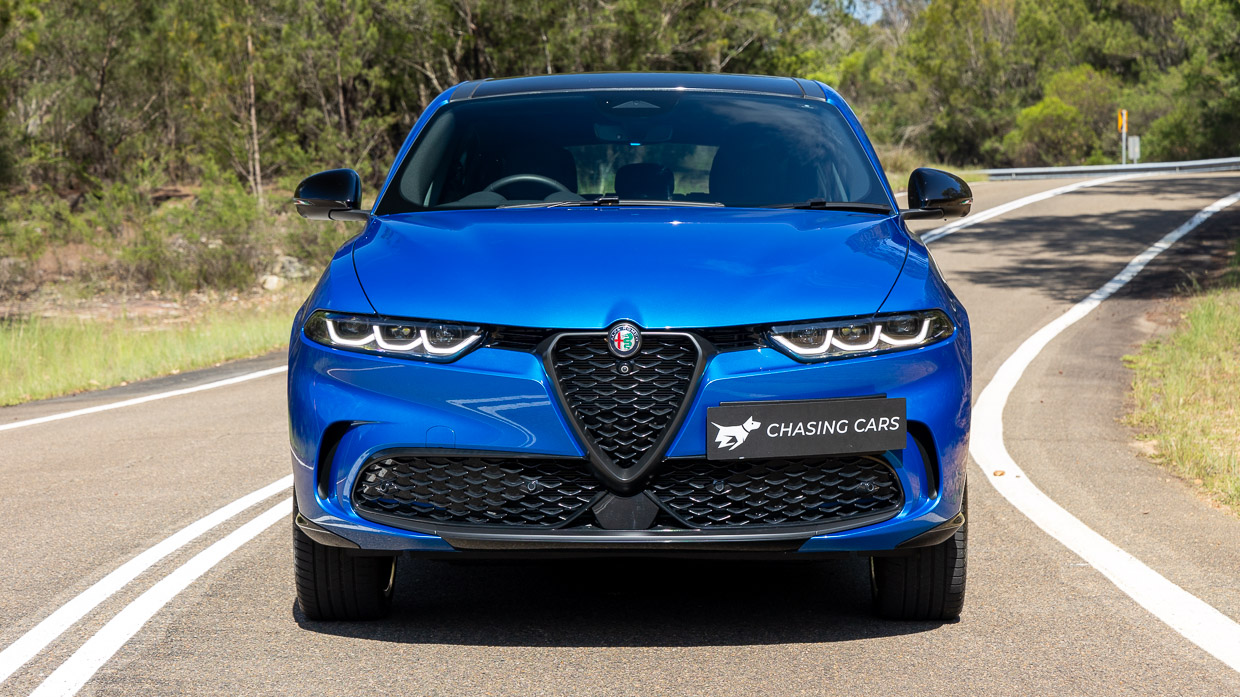
All that said, the front-wheel-drive-only moniker isn’t exactly accurate for the PHEV, but we’ll get to that shortly.
The Tonale is available in three grades in Australia – the Ti and Veloce mild-hybrids, and the range topping Veloce PHEV Q4 that we have with us today.
It will set you back $78,500 before on-road costs, or $81,990 as specified for our test vehicle, which includes 20-inch alloy wheels (+$1500) and premium paint (+$1990).
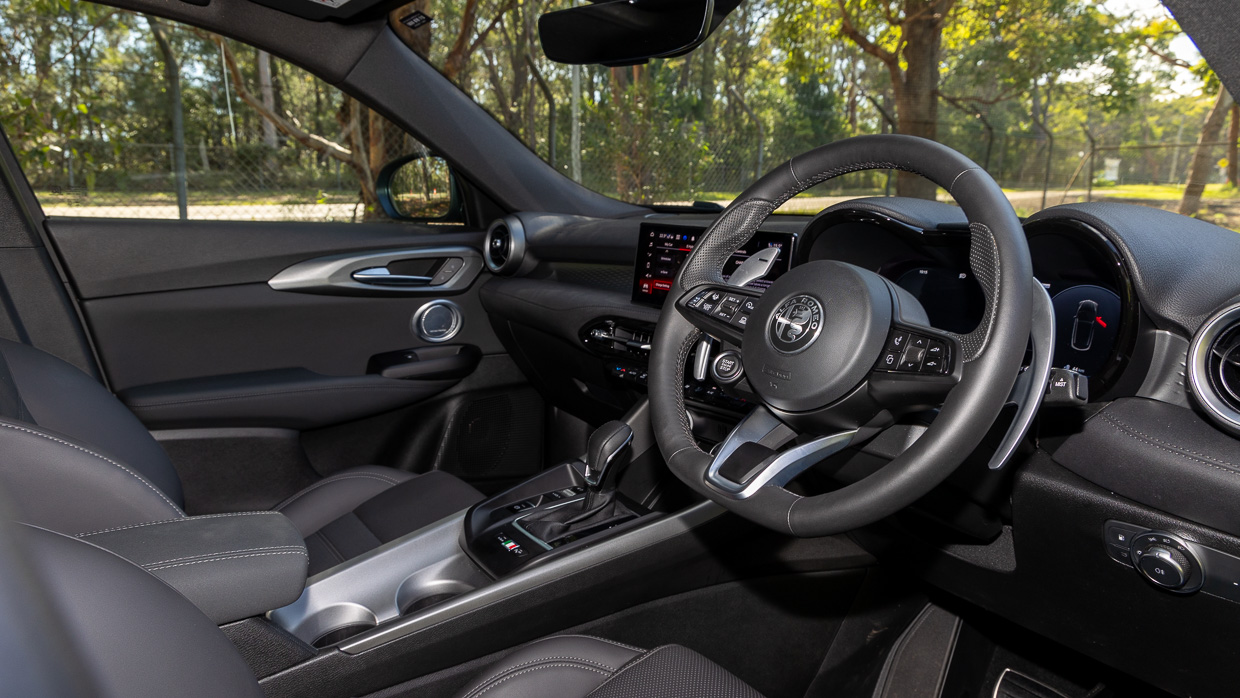
That’s a hefty surcharge over the Ti Hybrid base model ($50,990) and mid-spec Veloce Hybrid ($58,990), and a key consideration for those that aren’t wedded to having a PHEV.
However, regardless of the model you choose, what you do get is an unmistakably Alfa Romeo design. That includes the signature ‘scudetto’ grille, sleek headlights that evoke those from the Alfa Romeo SZ and RS of the ’90s, and of course the classic telephone dial wheel design offered on all grades in a variety of sizes.
Our Veloce PHEV was optioned with the larger 20-inch grey finish alloys and Mesano blue metallic paint, both of which help lift the kerbside appeal even further. Although personally I don’t know if I’d be able to go past Montreal green.
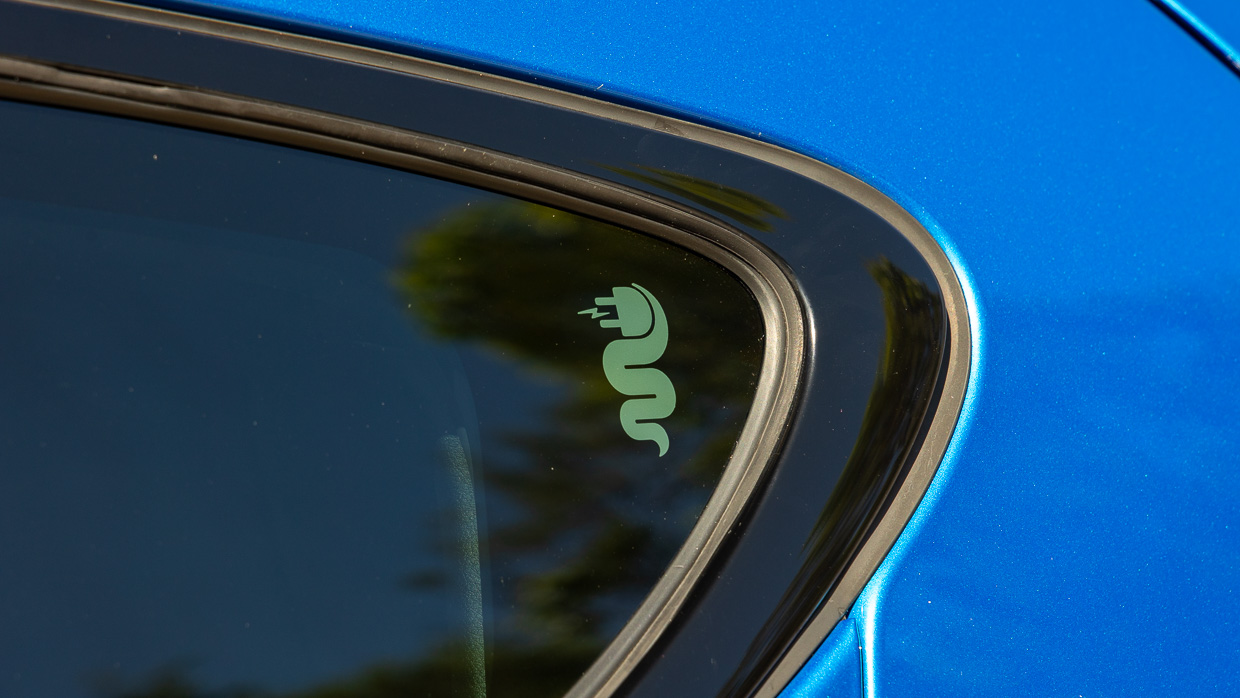
Behind the wheels you can see big red Brembo brakes peering through on all Veloce models and there are also other little touches like Italian flags on the exterior mirrors, and my favourite Easter egg of all on the driver’s side rear door window of the PHEV: the serpent from the Alfa Romeo logo, except that it’s head has been replaced with a power plug.
This Alfa is truly embracing electrification, it seems!
Apart from these little elements, have they pulled the design off?
Purely subjectively, this reviewer thinks they’ve done a great job. Perhaps the proportions might look a bit long and thin from some angles, but overall it’s a striking SUV that has a stylish presence that lifts it from the pack in what can be a sea of sameness from SUV-land.
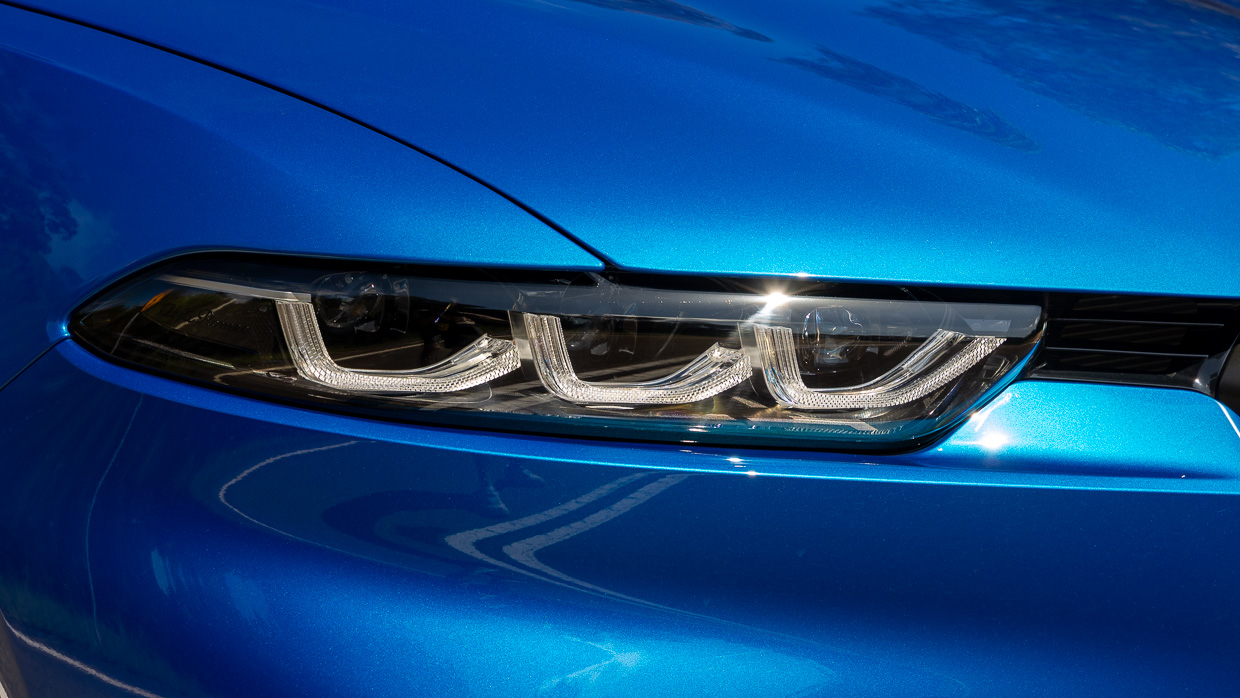
In terms of features, all Tonales are equipped with automatic full-LED matrix headlights, a 10.25-inch touchscreen media display, 12.3-inch digital instrument cluster as well as wireless Apple CarPlay and Android Auto, and Alfa Connected Services.
Stepping up to the mid-spec Veloce scores you the aforementioned red Brembo brake callipers, aluminium paddle shifters, pedals and doors sills, and Alfa’s active dual-stage valve suspension.
Stepping up again to the Veloce PHEV builds on this further with features like perforated black leather seats, eight-way electric driver and passenger seats with driver memory, heated and ventilated front seats, a 14-speaker Harman Kardon sound system, and a sunroof.
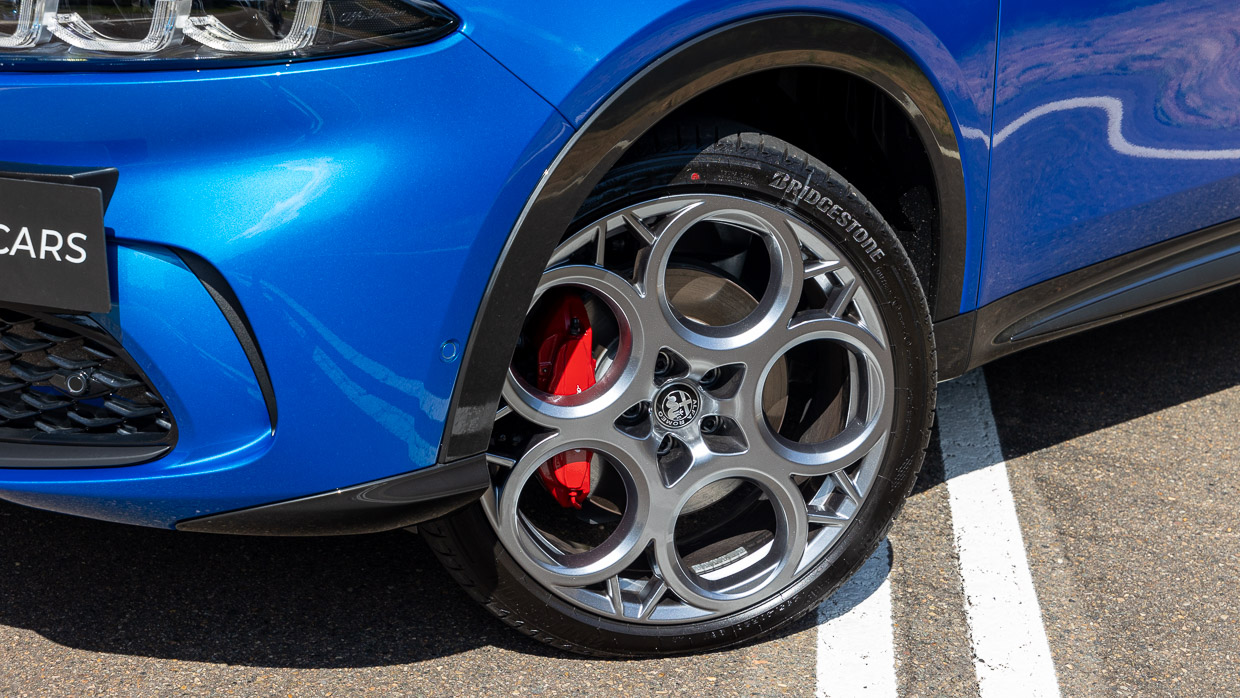
Apart from the larger 20-inch wheels and premium paints, there are no options on the PHEV, so it comes with all the Italian fruit there is, which is good considering its price premium.
Unlike the two lower grade models which are powered by a 1.5-litre turbo petrol series/parallel hybrid driving the front wheels, the PHEV is powered by a 1.3-litre pure internal combustion turbo-petrol engine delivering 132kW and 270Nm, mated to a six-speed torque converter auto, driving the front wheels.
Importantly, the PHEV also has an electric motor delivering 90kW and 250Nm, but it’s on the rear axle.
Each motor can work together or independently, so either all-, front-, or rear-wheel drive depending on the circumstance.
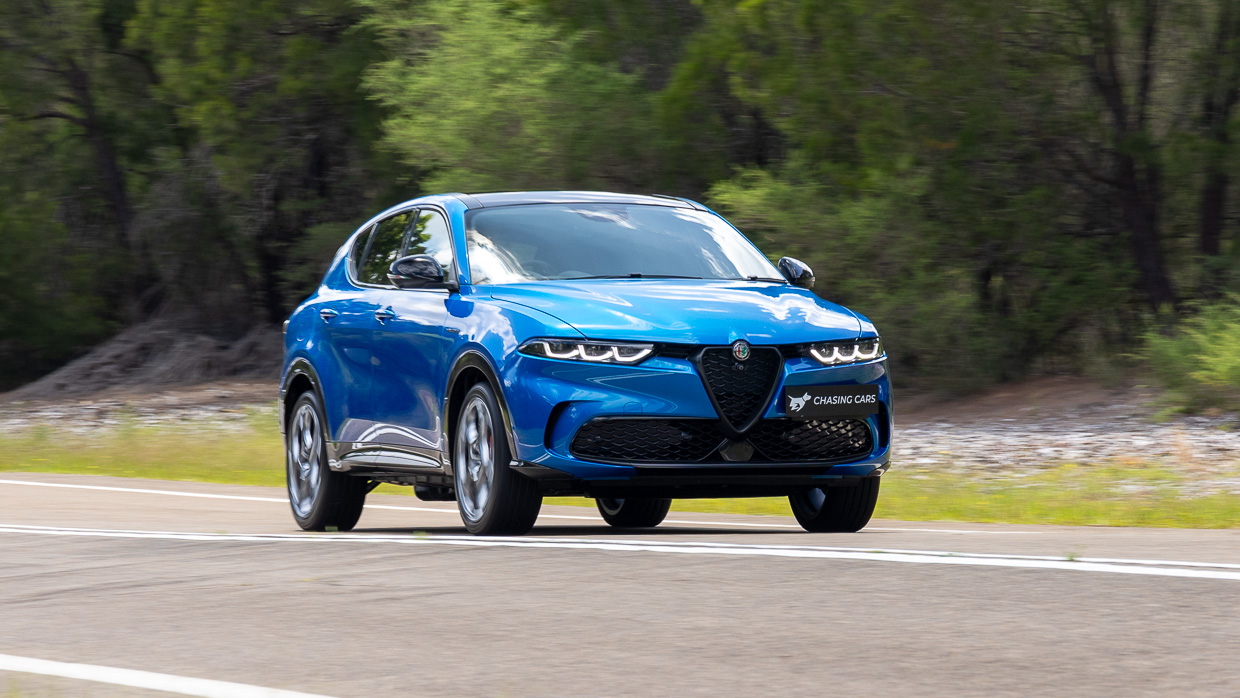
In addition, the front axle also features a 33kW electric motor, though that’s predominantly an inverter for the 15.5kWh (12kWh usable) lithium manganese cobalt battery and designed to improve the engine’s response through assisting the 1.3-litre’s turbocharger.
The total power output for the PHEV is 208kW, though it’s unclear what the peak combined torque is. On its own, the petrol motor delivers 132kW and 270Nm.
This all compares to total outputs of 188kw/240Nm for the 1.5-litre mild-hybrid, which is so mild that electric drive is only really capable at low manoeuvring and parking speeds.
As reputations have it, Alfa Romeos are supposed to be all about the driving – so how does the Tonale plug-in measure up?
Well, overall, it’s pretty solid. But also it drives quite unlike other Alfas I’ve driven, given the inherent variability of the petrol-electric drive, which is to be expected by the very nature of its powertrain.
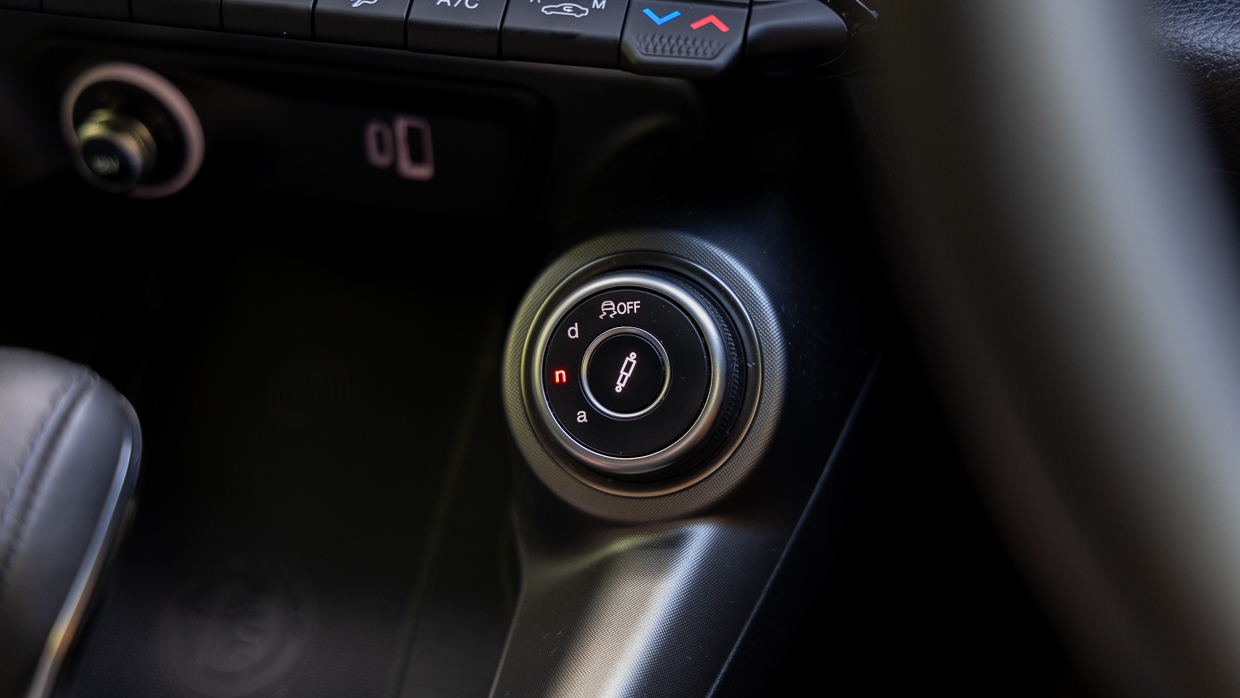
There are three driving modes you can choose from in the Tonale PHEV, and the ‘DNA’ nomenclature will be familiar to any recent Alfa owner – D for ‘dynamic’, N for ‘natural’, and A for ‘advanced efficiency’.
Being a PHEV, the natural party trick of this car is that, theoretically, it has enough electric range for you to go by your day-to-day life as if you drove a fully fledged EV.
And once you’re hitting the open road and travelling a bit further than your local bubble, you can enlist the range-anxiety-free experience of the petrol motor.
Each of its driving modes deliver a fundamentally different drive experience, so let’s take a look at them in unison, starting with advanced efficiency, or in other words – the pure electric mode.
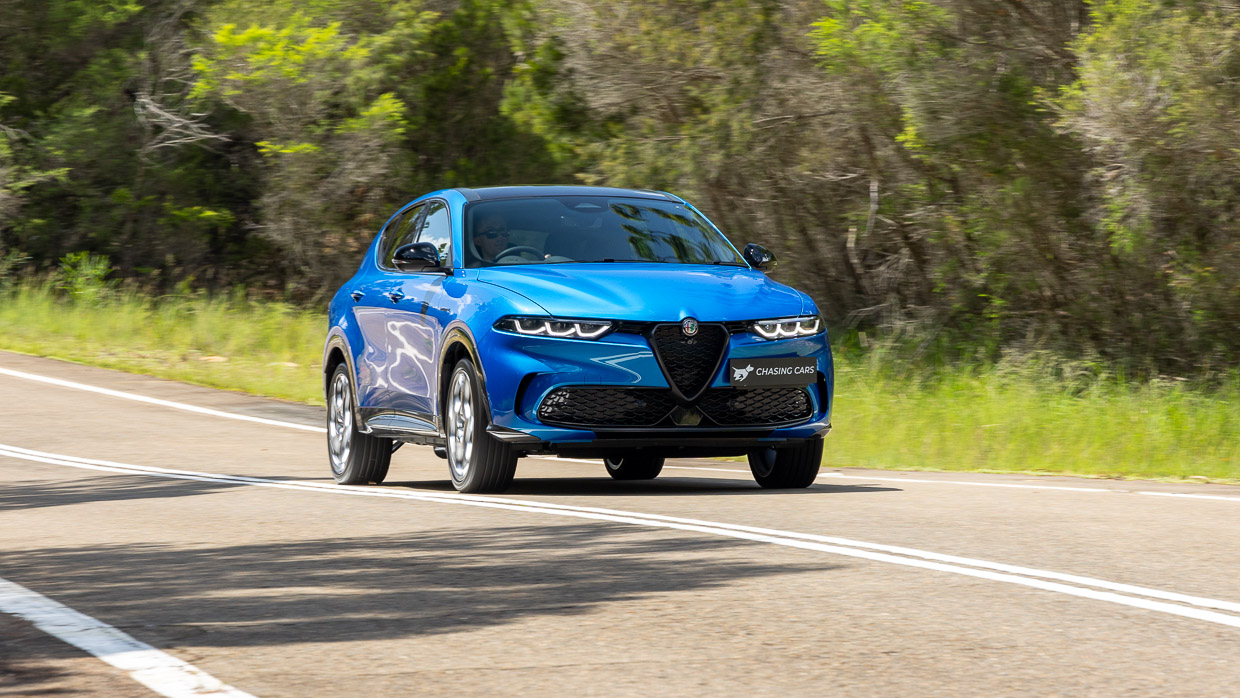
When you drive the Tonale in this mode, you will enjoy a smooth and quiet driving experience, essentially like any other EV.
Naturally there’s less poke without the support of the petrol motor, and you don’t get the same breakneck performance you might expect from some BEVs. Still, there’s enough power for a relaxed drive around town and in the suburbs where drivers will predominantly use this mode.
You can stay in this mode as long as you have charge. If you get to one percent charge or floor the throttle then the car will automatically shift back into Natural mode. Similarly, the top-speed for the electric mode is capped at 135km/h before the petrol engine will kick in.
When you do switch to natural mode, you can enjoy the full combined 208kW of power and let the Tonale use its PHEV magic to shift between the petrol driven front axle and electric rear axle.
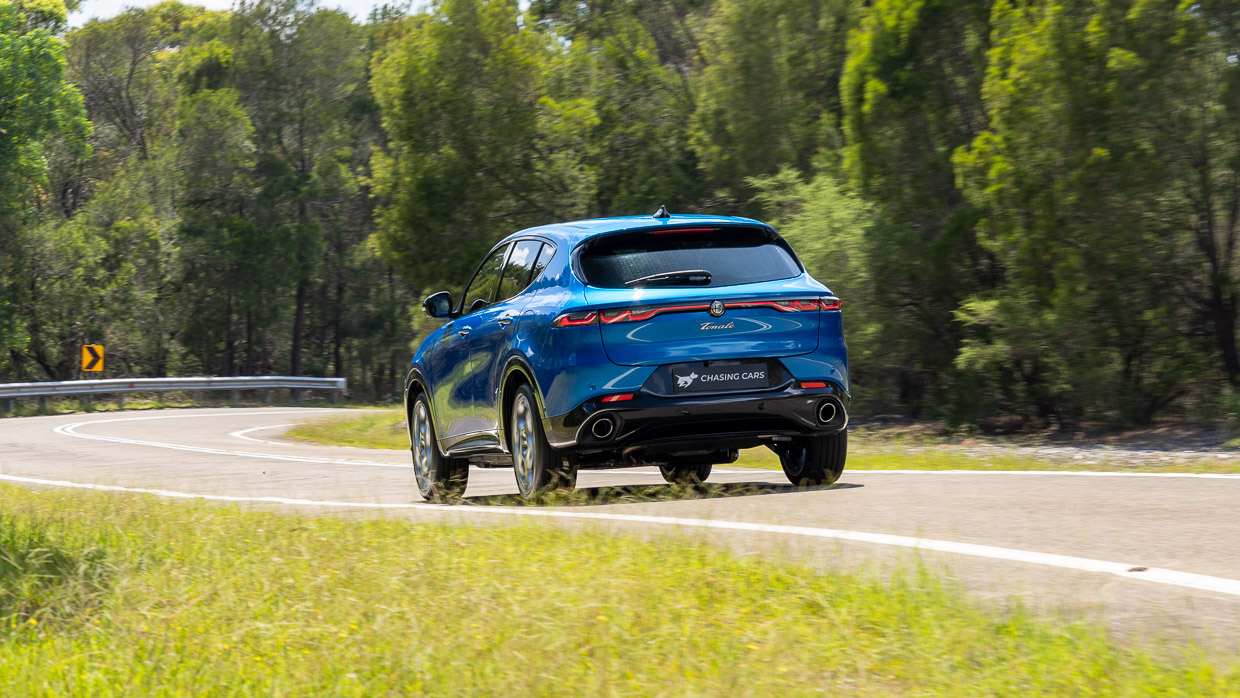
Overall this experience was generally quite smooth, although there were at least two occasions where the nature and timing of my throttle input resulted in a bit of a thud during the transition.
However, this was a rare occurrence and didn’t take away from what ultimately felt like a smooth and refined drive experience.
That also felt true regardless of mode – Alfa seems to have done a good job at delivering a mainstream feeling SUV that also has a bit of sporting character to it.
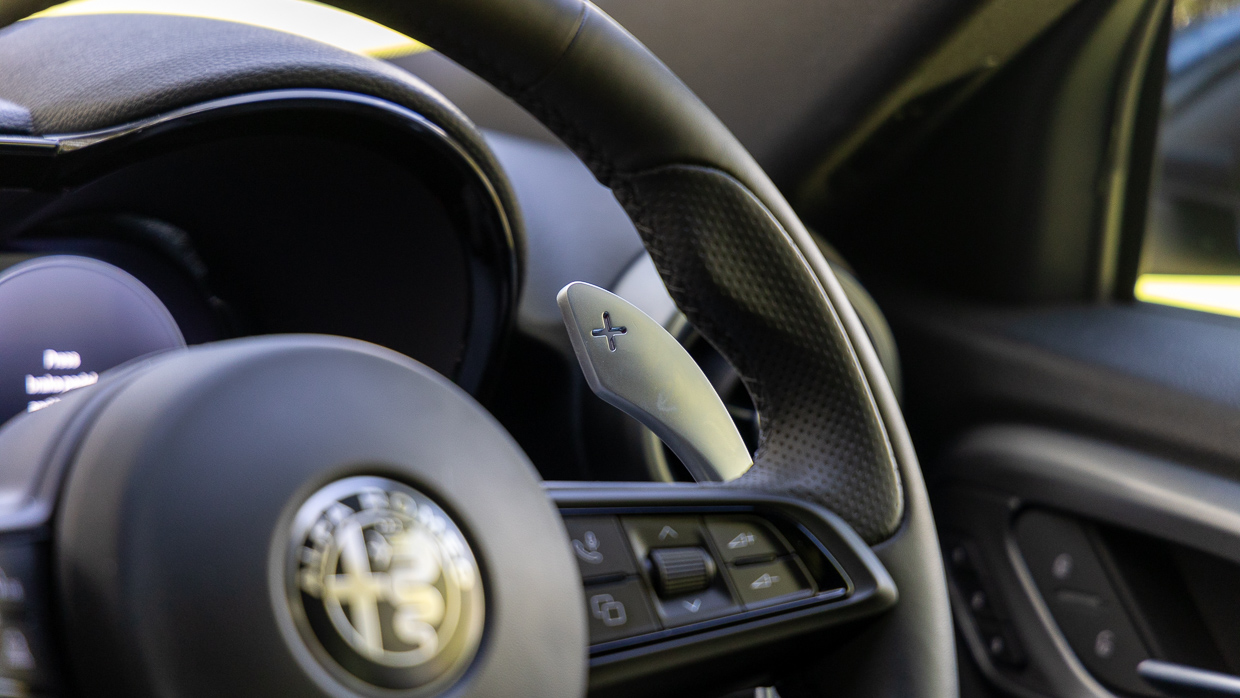
In this regard, the steering is incredibly light, which makes it an extremely easy vehicle to direct around town and in urban areas.
As well as being light, the steering is also very quick, direct and darty, and makes the nimble Tonale feel very light on its feet.
On the flipside, the steering does seem to lack any discernible feel and feedback, though SUV buyers will likely appreciate its lightness and ease of use.
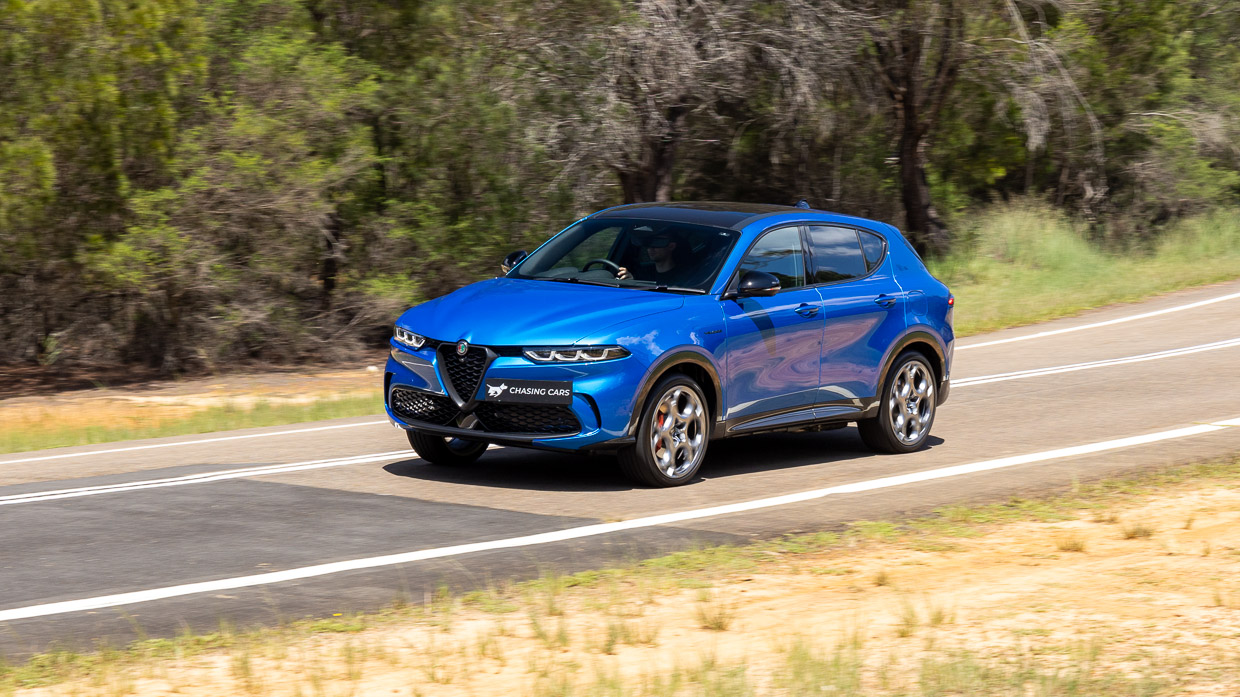
From a ride and handling perspective, the Tonale seemed to deliver great body control and good grip – punting it through corners was quite a joy and it never felt out of its depth, perhaps even wanting for more power.
The Tonale’s ‘chuckability’ was also quite impressive, particularly given it lugs around an extra 300 kilos over its mild-hybrid counterparts.
Ride quality was also acceptable – I wouldn’t say plush, and it’s more on the firm side but it seemed to deliver a decent amount of compliance on bumpy roads despite this. I do note that our test vehicle rode on the optional – and biggest – 20-inch wheels.
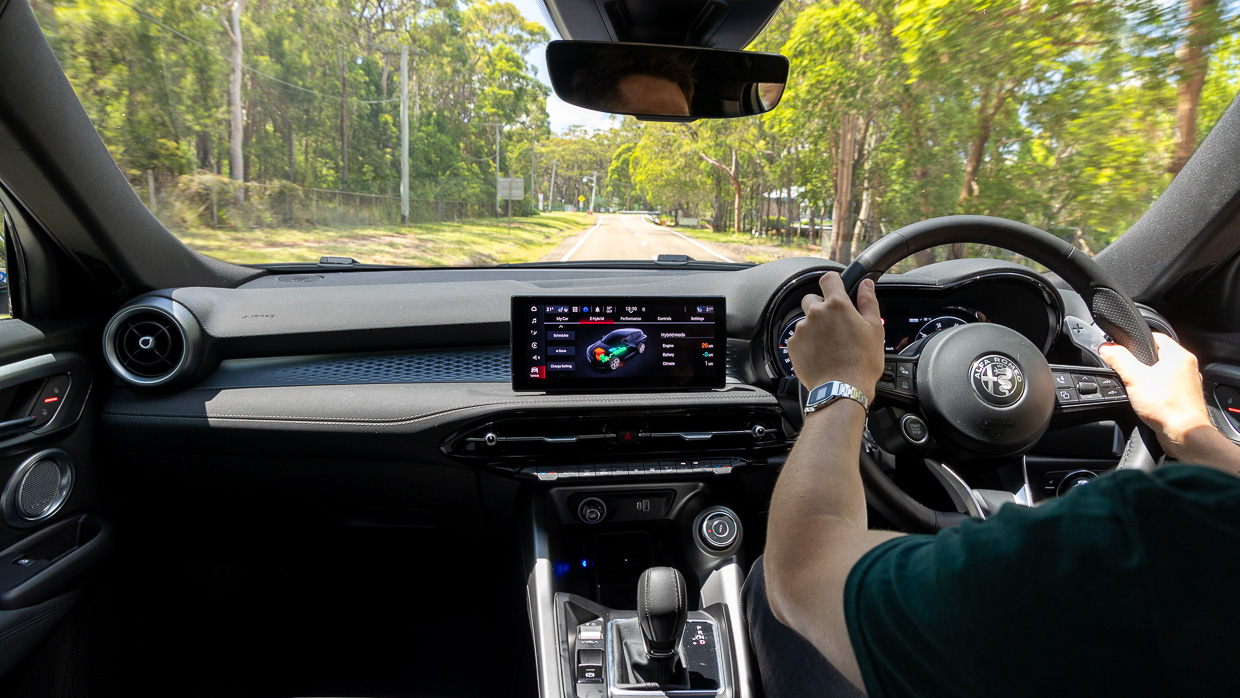
I haven’t driven the Tonale on higher-profile tyres so can’t say how much of an impact the larger wheels make to ride quality.
In terms of the six-speed automatic, it seemed to do a decent job for the most part if perhaps exhibiting a whisker of indecision on the rare occasion. Perhaps more ratios wouldn’t go astray.
You can make the experience a whole lot spicier by putting the car into dynamic mode to enjoy sharper throttle response and longer-held gears. It’s here where the Tonale shines best on a sporty drive, however naturally this is the least efficient mode for the PHEV.

The claimed 0-100km/h acceleration time for the Tonale PHEV is 6.2 seconds, compared to 8.8 seconds for its 1.5 litre mild-hybrid siblings and we actually beat this in our testing, with our best figure of 5.82 seconds.
Braking performance was also solid at 34.27 metres.
So does the Tonale PHEV feel as special as you’d expect an Alfa Romeo would inside?
Overall the cabin has a nice ambience to it and there are definite visual cues to remind you that you are in an Alfa – the familiar steering wheel with the push button start, the aluminium paddle shifters mounted to the steering column instead of the back of the steering wheel.
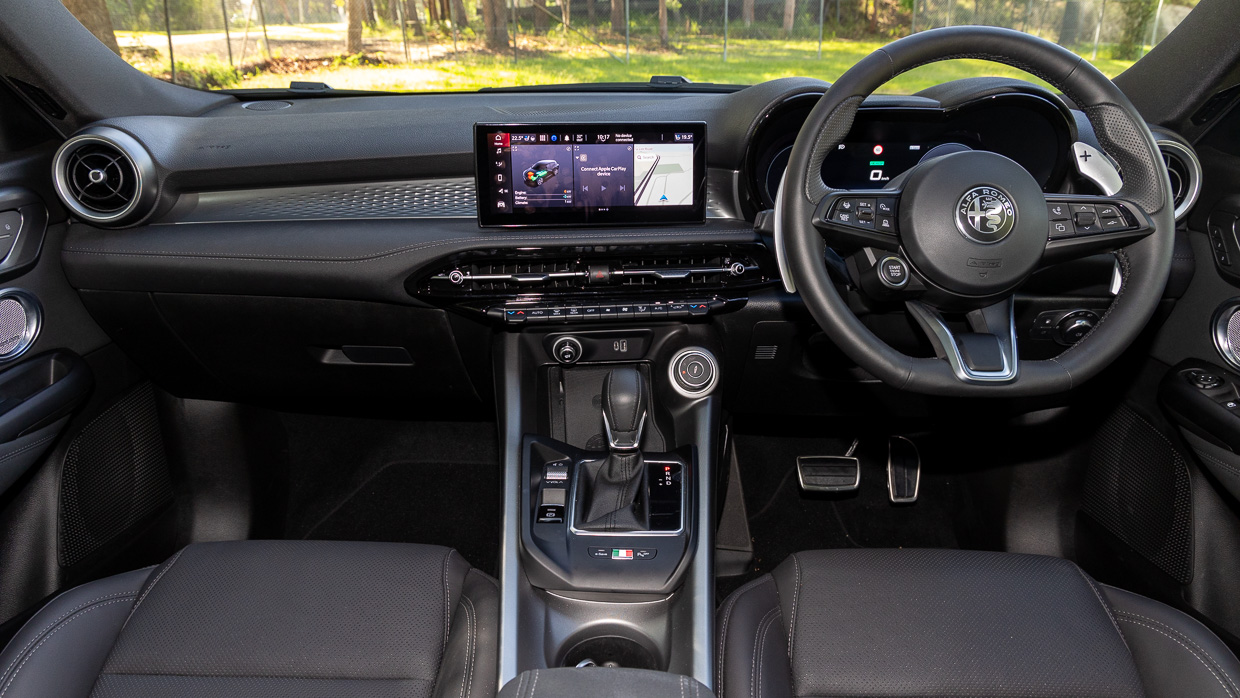
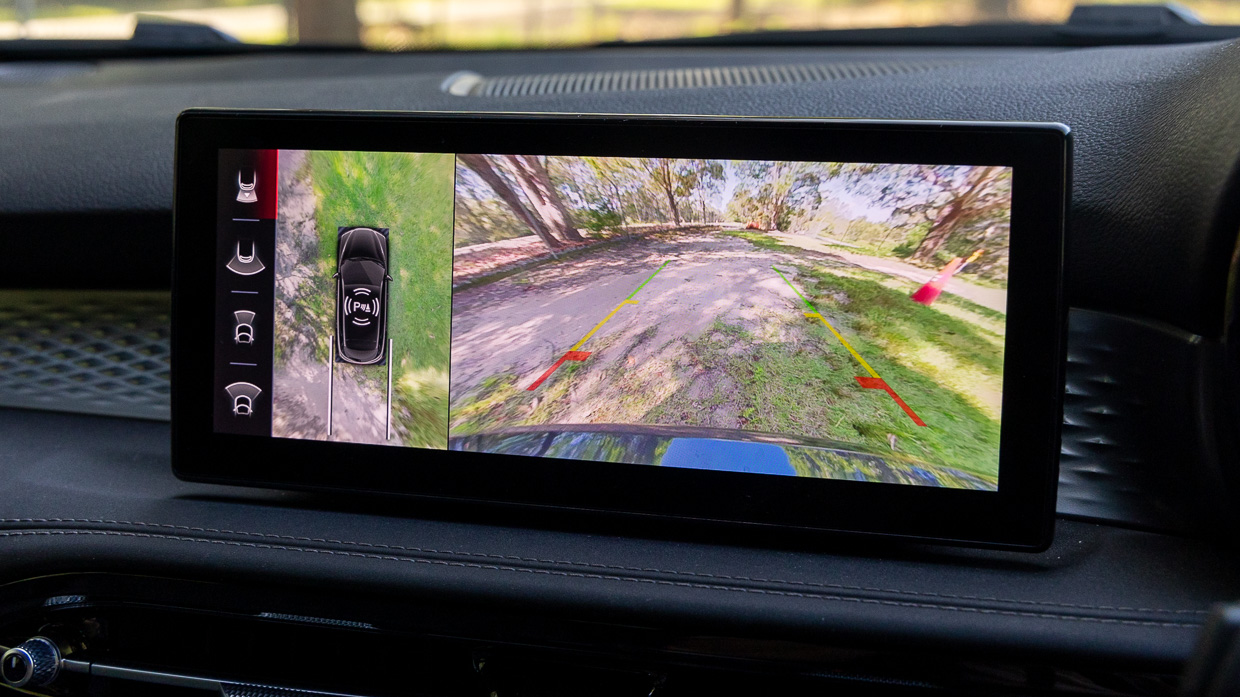
Another area that tickles your reviewer’s personal tastes is the retro setting on the digital instrument cluster, which makes the dials look like they were lifted from a classic ’60s Alfa. Naturally there are two other more modern settings for that feature.
In terms of other positive elements – the seats have a good level of adjustability and it’s easy to get comfortable with good forward visibility, although the A-pillars do seem quite thick.
It’s also appreciated that Alfa Romeo hasn’t put everything behind a screen, with tangible buttons for the climate controls.
Similarly, at least to this reviewer’s tastes, it’s pleasing that the brand has gone with a 10.25-inch screen that hasn’t overtaken the dashboard – all you need, and fits in nicely with the interior aesthetics.
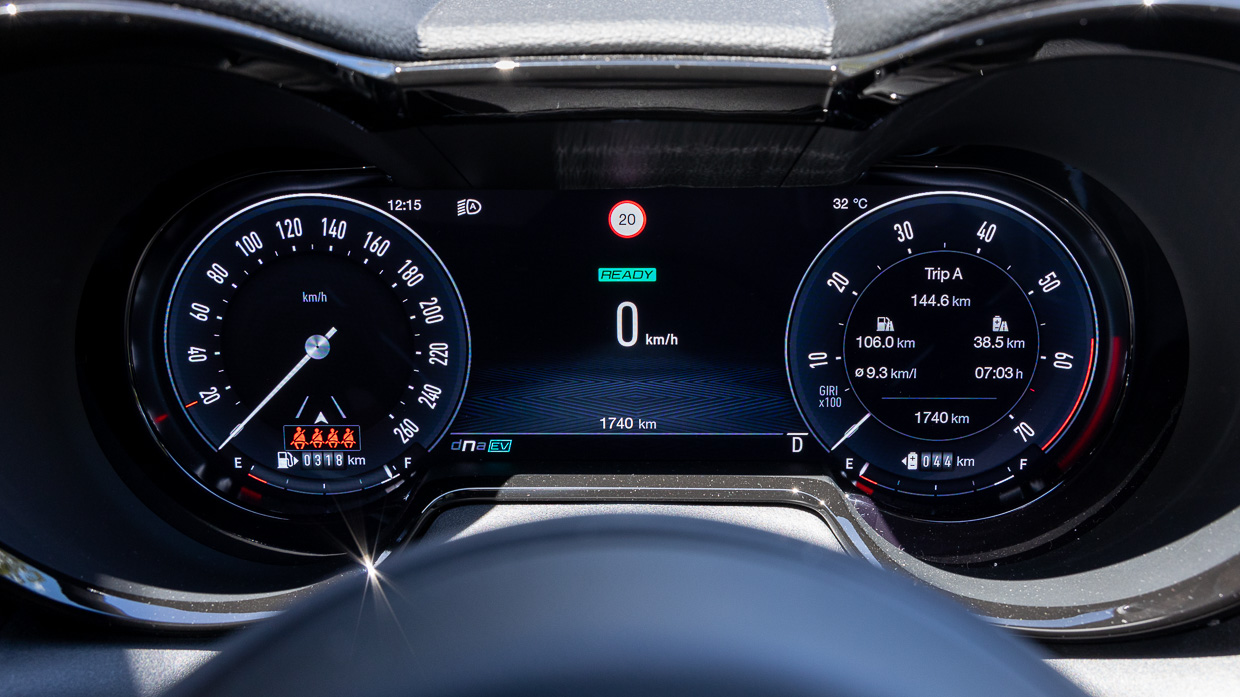
While the cabin was pleasing overall, a few little improvement areas were noted.
Firstly, and perhaps contradictory to the last point, while the 10.25-inch display screen size is appreciated, I felt the graphics within it could have been maximised to utilise the space a bit better – some icons were quite small, which could be tricky for the short-sighted.
Ergonomically, the cabin did a great job overall, though to nitpick, a bit more space before the sidewall near the driver pedals would have been appreciated. I found my left foot slightly angled to the right due to the proximity of the sidewall, which could be annoying on long trips if you have long legs.
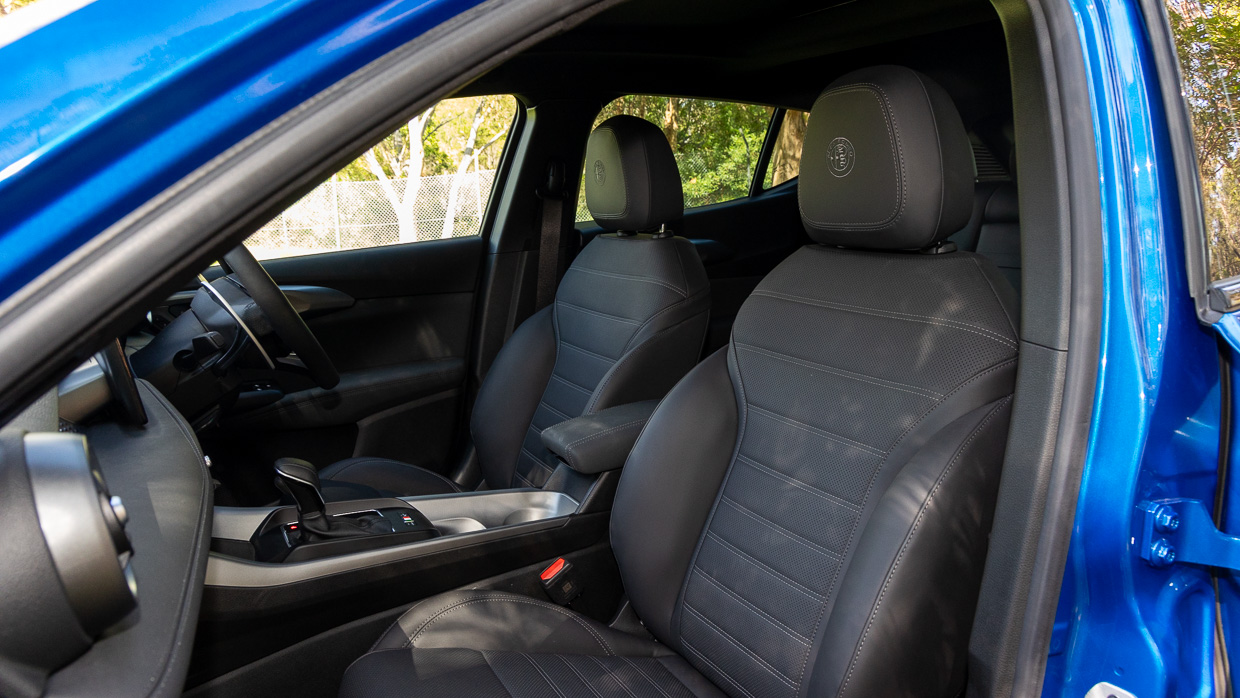
The shifter paddles, while beautiful, could sometimes be a bit cumbersome when going for the indicator stalks, however I’d accept that just to retain them given their cool factor.
The cabin has a nice overall design, but while there is a decent amount of soft-touch surfacing I wasn’t sure about some of the materials in the lower areas, which feel a bit plasticky, particularly on the centre console. Thus, it doesn’t quite have the pleasant tactility you’d expect of a $80K car.
While Alfas have traditionally been all about the driver, the rear of the Tonale is a decently pleasant place to be too.
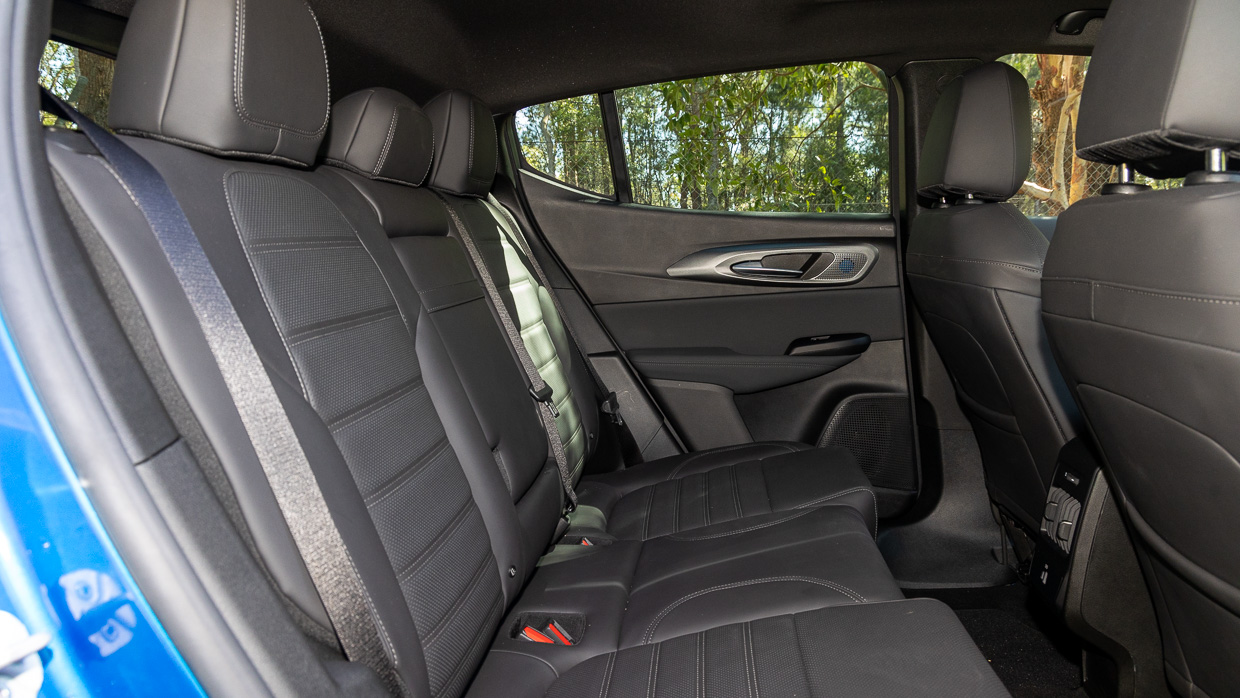
The rear seats are quite comfy and there’s good leg and toe room, though at 180cm I found I would have liked more under-thigh support. Head room was also tight for me in what was quite a cocooned rear seat given the rear window tapers up as part of the car’s styling.
In terms of amenities, rear seat passengers are treated to some soft-touch materials on the armrests, map pockets on either seat, rear air vents, USB-A and USB-C cable connections, bottle holders in either door and a centre armrest with cup-holders.
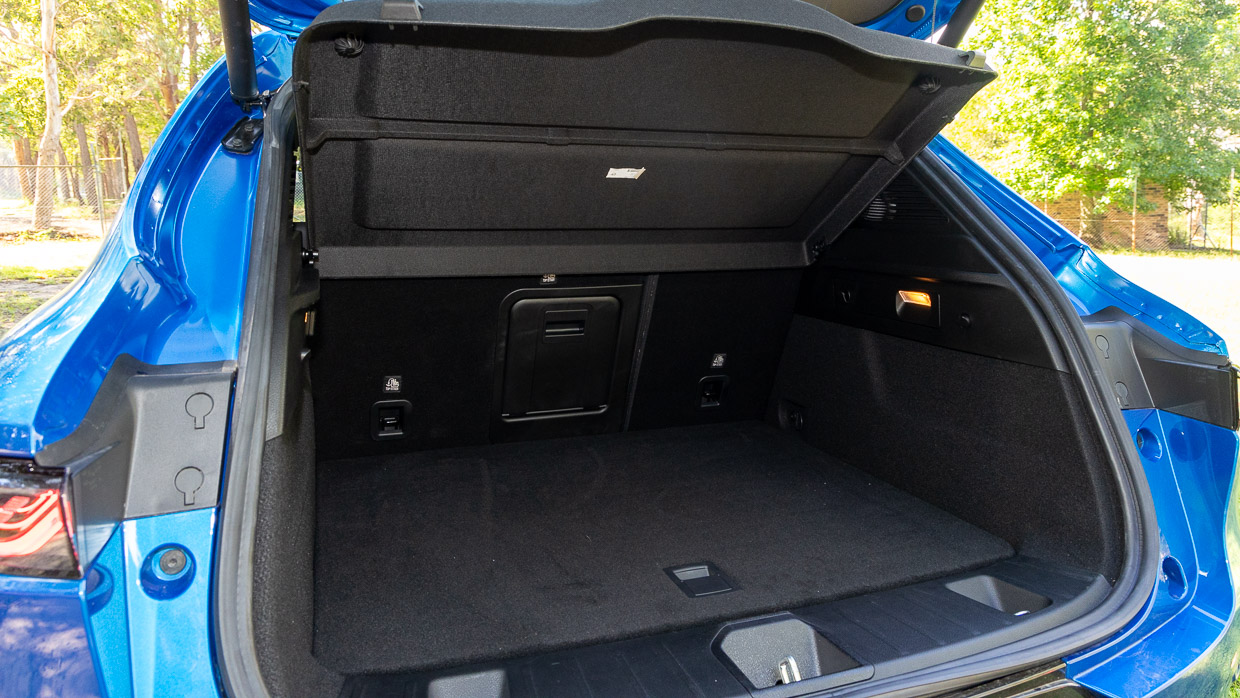
If you want to squeeze someone in the middle, there is a transmission tunnel they will have to navigate but it’s not too high and relatively wide, so for short trips they may be able to keep their feet on it.
Opening the electric tailgate on the Tonale PHEV reveals a boot with 385 litres of space. You can fold the rear seats down 60:40 to increase the load area to 1430 litres. Unfortunately there’s no spare wheel, just a tyre puncture repair kit.
The Tonale PHEV is unrated by ANCAP but the lower-grade mild hybrid variants have a five-star crash safety rating.
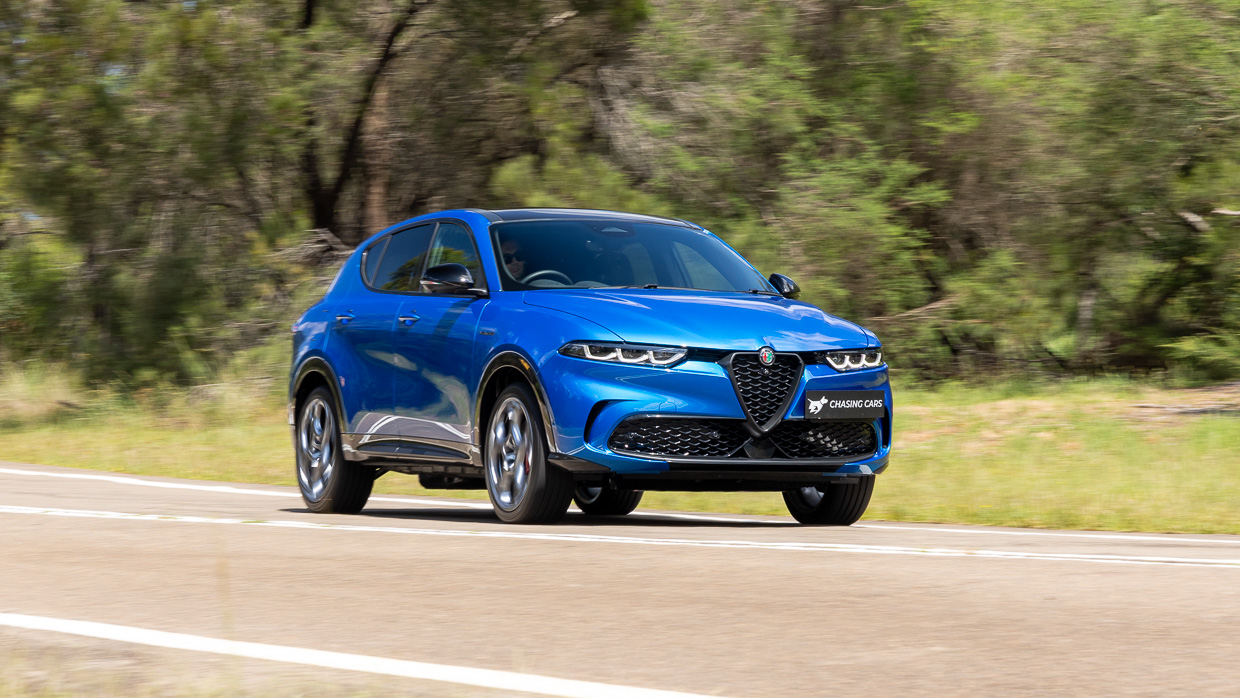
As well as this, the Tonale PHEV also comes equipped with features like six airbags, autonomous emergency braking, traffic sign recognition, lane departure warning and lane keep assist, front and rear parking sensors, active blind-spot assist with rear cross-traffic alert, adaptive cruise control with stop/go, and a 360-degree view camera with dynamic lines.
I didn’t find the active safety features like lane keep assist to be too intrusive during my time with the car either.
Now to the all-important questions when buying a plug-in hybrid: electric range and fuel consumption! After all, Alfa Romeo boasts that this is their most efficient vehicle ever, but just how efficient is it?
Alfa Romeo claims a combined fuel efficiency figure of 1.5 litres per hundred kilometres and an electric only range of 60.5 kilometres.
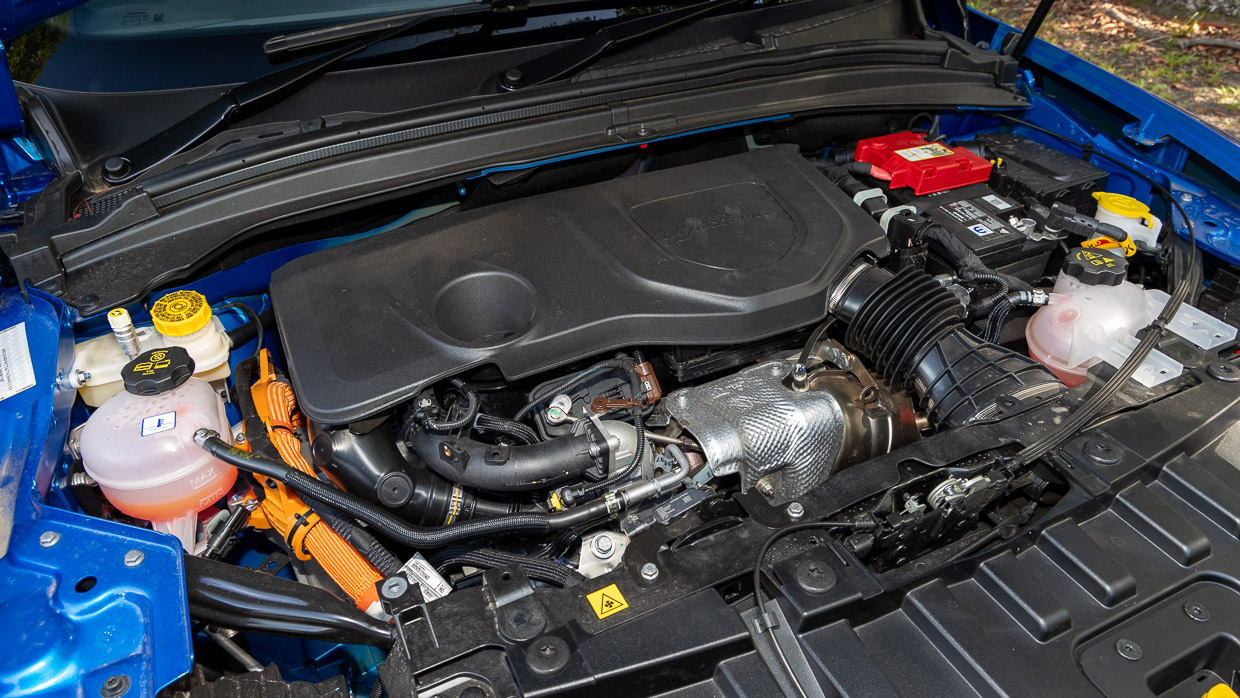
In terms of fuel efficiency, we don’t have a comparable combined fuel efficiency figure for the regular hybrid mode for this test as we predominantly drove in the electric mode, or in hybrid mode – with the less fuel efficient e-Save functionality switched on.
However, on our first drive of the car in Europe last year Chasing Cars returned a 4.2L/100km consumption figure on a 100km test loop, which did include some twisty Italian Alpine passes.
When in hybrid mode, or natural mode as per the drive mode selector, we delivered an average of 12.8 litres per 100kms, but this was with the e-Save functionality switched on.
This is a thirsty feature on EVs, which uses the petrol motor to maintain or increase battery charge, so in this context the figure looks about right. However, the use case of this mode is less likely in Australia where the car will likely be driven mostly in full EV mode or standard hybrid mode.
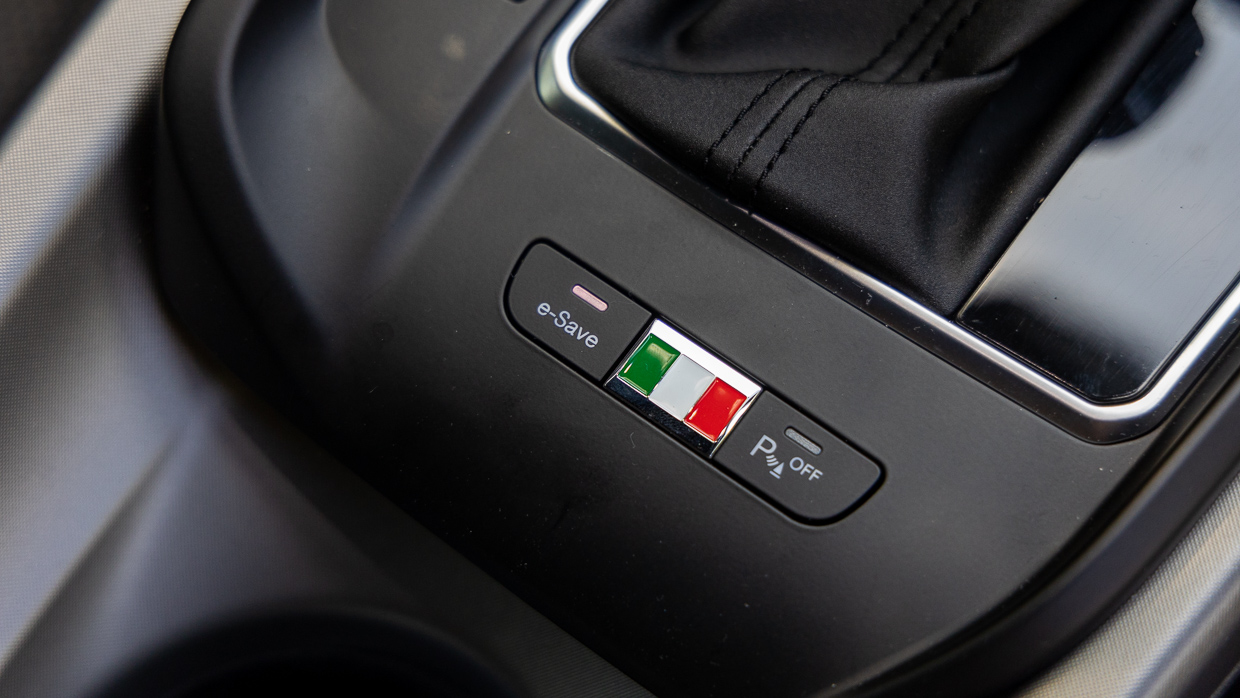
More importantly, however, how did we go in terms of pure electric range? Well, in a continuous urban test loop of up to 70km/h we managed to drive exactly 60 kilometres on a single charge before the petrol engine kicked in – so Alfa’s claimed 60.5km range looks accurate.
It is important to note however that there was a discrepancy on the charging read out when we began our test – the digital instrument cluster noted 100 percent battery as well as “charging complete”, but the media display screen showed 98 percent when we started our test.
Nevertheless, we drove the 60kms, and based on the vehicle’s 12kWh usable battery capacity, that’s 20.0kWh per 100km*.
*This has been corrected from our initially reported 25.8kWh/100km consumption figure, which was based on the vehicle’s gross 15.5kWh battery capacity.
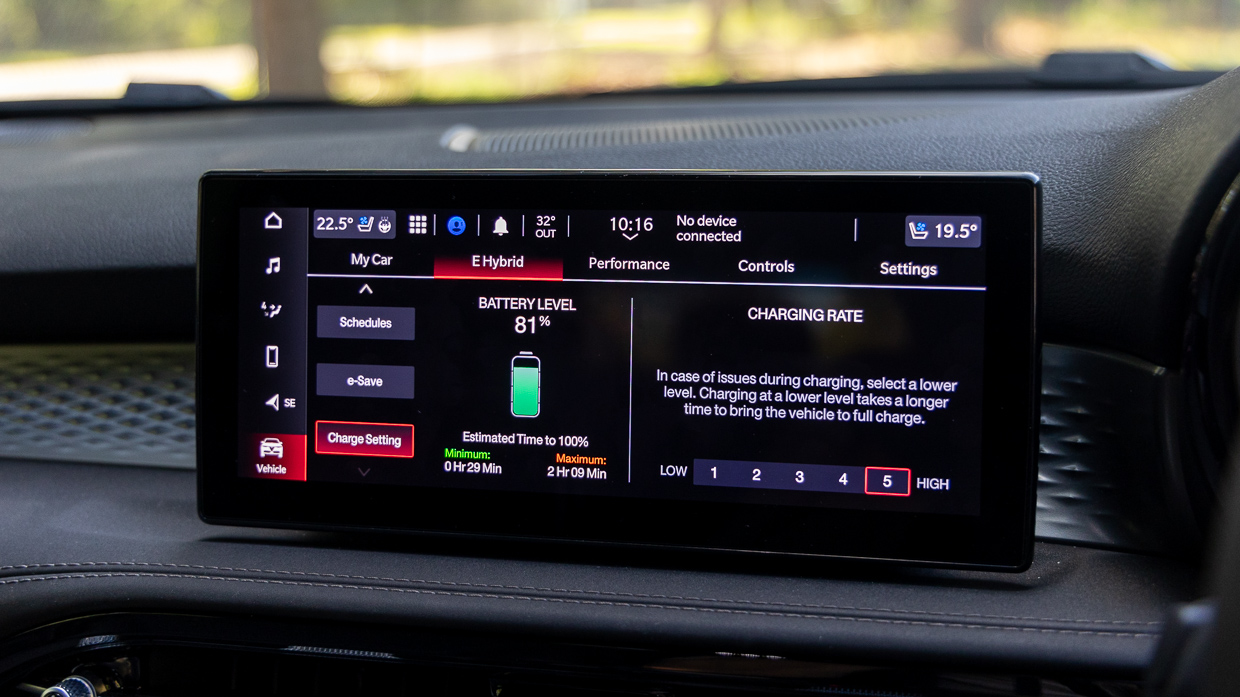
In terms of charging the vehicle, standard equipment includes a 7.4kW AC on-board charger and a Type 2 charging port for public charging. Alfa claims that using a peak 7.4kW AC charger will see the battery go from zero to full in less than 2.5 hours.
However, because the battery is so small, you can also top the car up from zero to 100 percent overnight using a traditional 240-volt home powerpoint.
Unfortunately, I wasn’t able to do this on my first night with the car due to a charging fault.
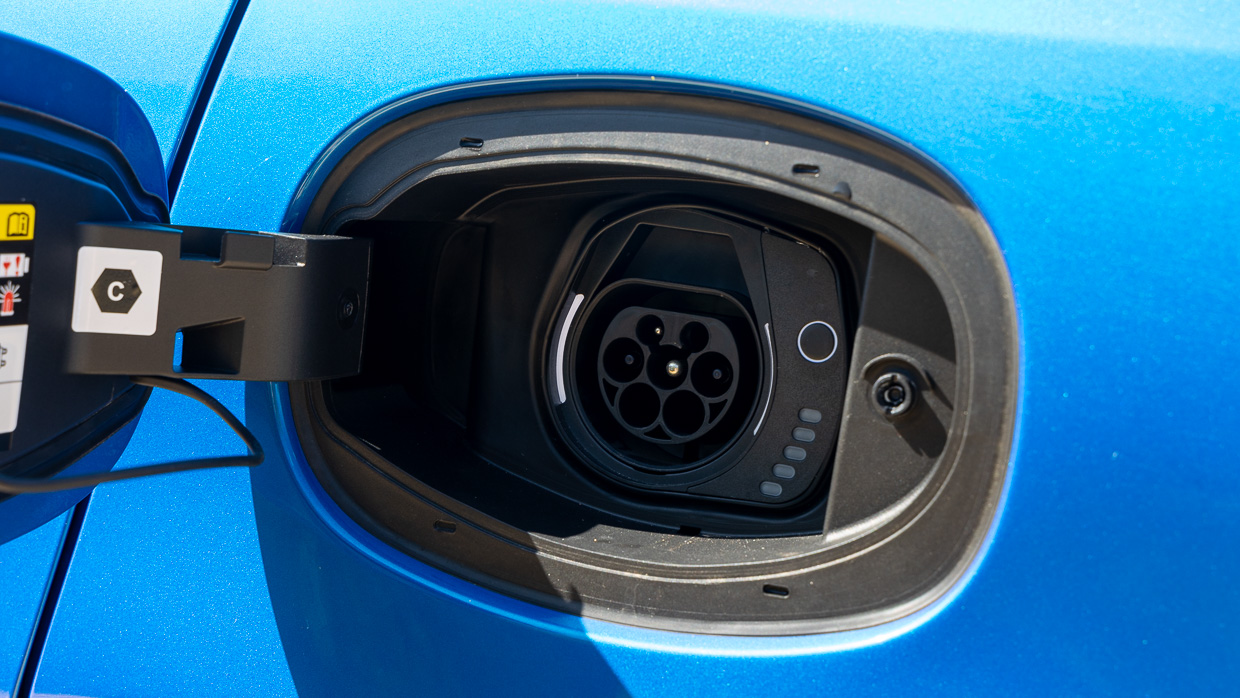
The Tonale was actually recalled for this very reason late last year, however to its credit, Alfa Romeo was extremely fast to rectify this issue and gave the car the necessary software update it required that same day to rectify the issue.
On my second night with the car I was able to charge it successfully overnight. This took approximately 7.5 hours to bring the car up to full charge using a traditional three-pin wall plug.
The lack of a Mode 3 Type 2 cable to connect to a public charger was frustrating, however, as it meant that I was twice in a situation where I was at a public charging station which either had a charger that wouldn’t stretch far enough to my car, or required you to supply your own cable, which I didn’t have.
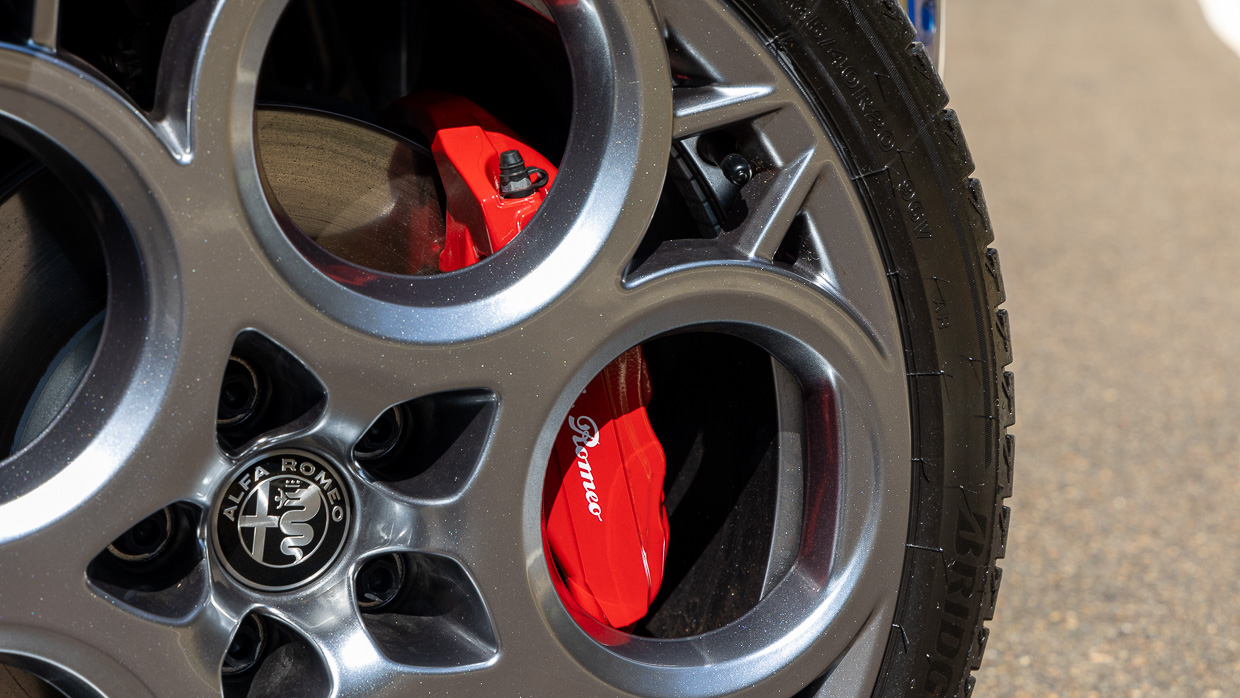
In terms of running cost and servicing, the Tonale PHEV takes 95-octane fuel. Servicing intervals are every 15,000kms or every 12 months and services will set you back $3100, which is $575 less than the mild-hybrids.
The Tonale is also covered by a five-year, unlimited-kilometre warranty and the battery also has an eight-year, 160,000km warranty
So has Alfa nailed the brief with the Tonale Plug-In Hybrid?
Well, for such a pivotal vehicle for the brand overall my experience has generally been a positive one. It’s a great looking, stylish SUV that’s comfortable, decently practical, and marks a new era for the brand as it heads toward full electrification.
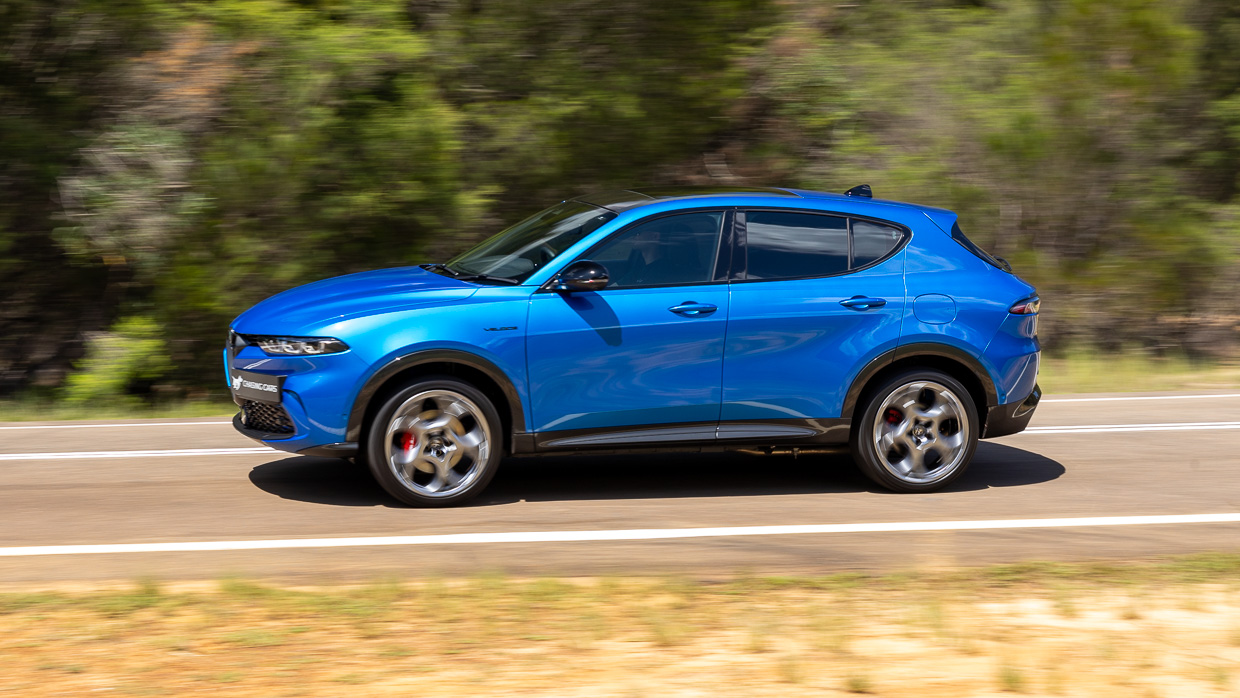
Ultimately, it might not be as exciting to drive as other more spirited Alfas, but that’s not the point – this is a mainstream SUV, albeit one with some Alfa-ness and style injected to it. And in that regard, it certainly makes a case for itself, for the right buyer.
If you want an SUV, and you want one that stands out from the pack as something a bit more special and stylish, and on top of that you also want to reduce emissions but aren’t quite ready to go full electric, then the Alfa Tonale PHEV could be for you.
Though, at this price point there is some hefty competition from premium petrol SUVS (Audi Q3, BMW X1, Volvo XC40 and Mercedes-Benz GLA) to fully fledged EVs (BMW iX1, Volvo XC40 Recharge, Mercedes-Benz EQA 250), to other PHEVs (Peugeot 3008 GT Sport, Mazda CX-60, which both technically sit in the medium segment respectively).
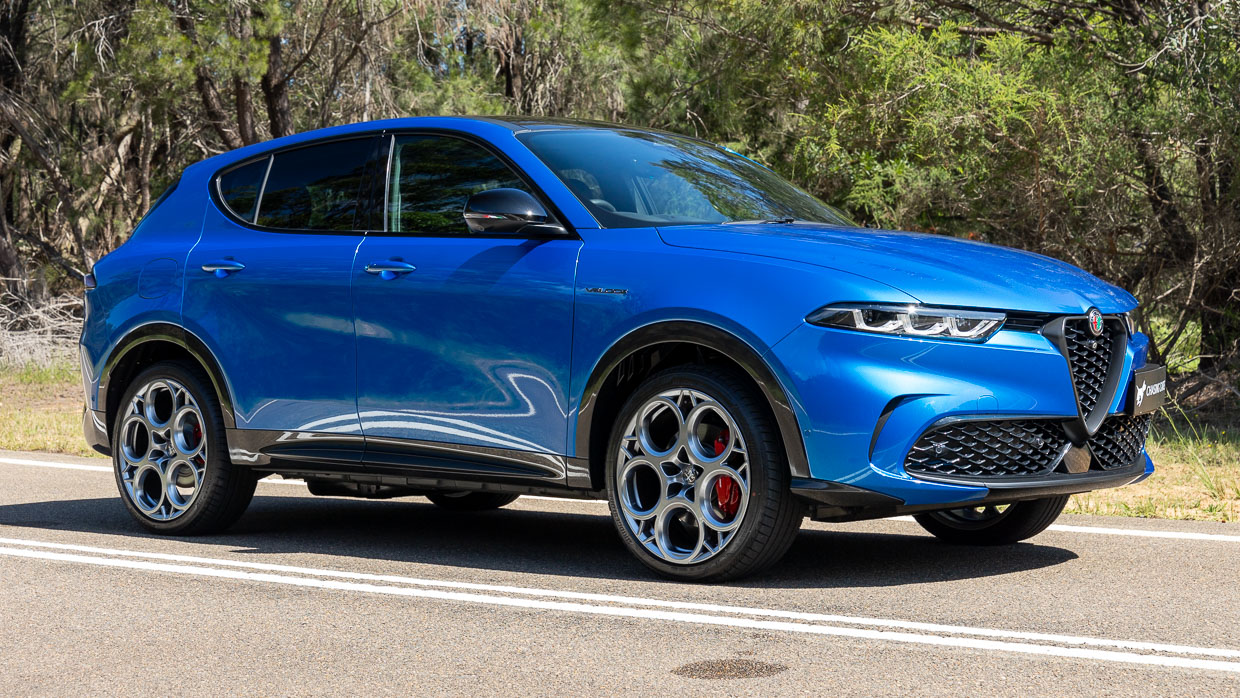
Its good looks could be enough to sway some ‘Alfisti’ toward the Tonale despite the competition, though more pragmatic Australian buyers are certainly not short of SUV options within the price range.
It’s a new era for Alfa and one we’ll be watching closely – the Tonale PHEV is likely just a taste of what’s to come.
Who knows, perhaps in future Alfa Romeo reviews words like “efficient”, “practical” and “reliable” might become just as synonymous with the brand as words like “passion” and “emotion”…
Key specs (as tested)
About Chasing cars
Chasing Cars reviews are 100% independent.
Because we are powered by Budget Direct Insurance, we don’t receive advertising or sales revenue from car manufacturers.
We’re truly independent – giving you Australia’s best car reviews.
The estimate provided does not take into account your personal circumstances but is intended to give a general indication of the cost of insurance, in order to obtain a complete quote, please visit www.budgetdirect.com.au. Estimate includes 15%^ online discount.
^Conditions Apply
Budget Direct Insurance arranged by Auto & General Services Pty Ltd ACN 003 617 909(AGS) AFSL 241 411, for and on behalf of the insurer, Auto & General Insurance Company Limited(ABN 42 111 586 353, AFSL 285 571).Because we don’t know your financial needs, we can’t advise you if this insurance will suit you. You should consider your needs and the Product Disclosure Statement before making a decision to buy insurance. Terms and conditions apply.
Indicative quote based on assumptions including postcode , 40 year old male with no offences, licence suspensions or claims in the last 5 years, a NCD Rating 1 and no younger drivers listed. White car, driven up to 10,000kms a year, unfinanced, with no modifications, factory options and/or non-standard accessories, private use only and garaged at night.
^Online Discounts Terms & Conditions
1. Discounts apply to the premium paid for a new Budget Direct Gold Comprehensive Car Insurance, Third Party Property Only or Third Party Property, Fire & Theft Insurance policy initiated online on or after 29 March 2017. Discounts do not apply to optional Roadside Assistance.
2. Discounts do not apply to any renewal offer of insurance.
3. Discounts only apply to the insurance portion of the premium. Discounts are applied before government charges, taxes, levies and fees, including instalment processing fees (as applicable). The full extent of discounts may therefore be impacted.
4. We reserve the right to change the offer without notice.